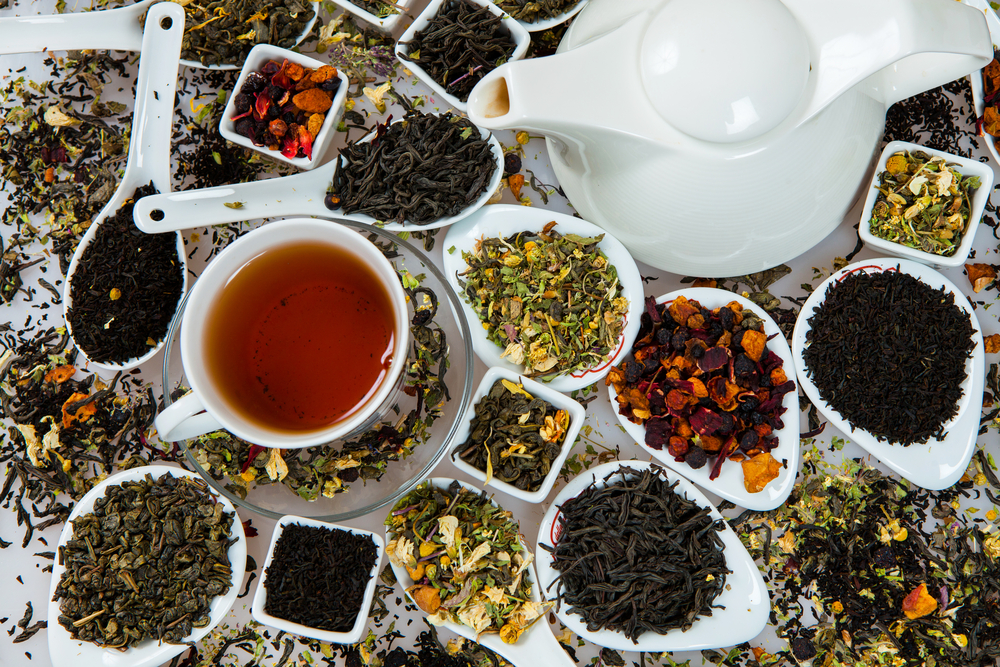Nothing can beat the feeling of holding a hot cup of flawlessly brewed tea in your hand. And when that sip hits your taste buds — my, oh, my. It can awaken all your innermost and basest emotions and senses.
Tea is the ultimate universal beverage. After all, billions of people across the globe can’t be wrong. Get this: in 2018 alone, over 270 billion liters of tea were consumed. Tea consumption is expected to hit a staggering 297 billion liters by 2021.
But, let’s not get carried away by big numbers.
If you’re here, the chances are fairly good that you want to take your loose tea game to the next level. Perhaps you’ve spent your entire life drinking bagged tea, and you want to get your feet wet in the fabulous world of loose tea.
That’s why we put together this quick guide to help you get acquainted and start enjoying loose tea like a pro.
First Things First: What is Loose Tea?
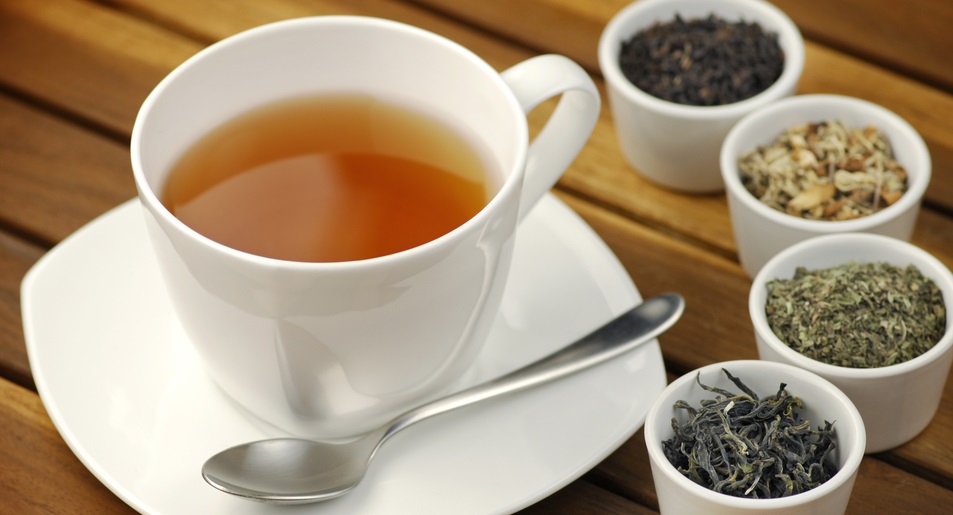
Loose tea or loose-leaf tea is an exciting and fresh way to brew tea without the use of a traditional teabag. In other words, loose teas don’t come pre-packed in tea bags.
By not cramming them into a small bag, loose-leaf teas tend to be richer, more flavorful and of greater quality.
Instead of brewing using a teabag, loose-leaf teas are placed inside an infuser, french press or a steeping ball. This process is called tea steeping.
Loose-leaf teas absorb water and engorge perfectly when steeped. As the hot water flows, it extracts a huge variety of aromas, flavors, minerals and vitamins from the loose-leaf teas.

Why Loose Tea Is Amazing
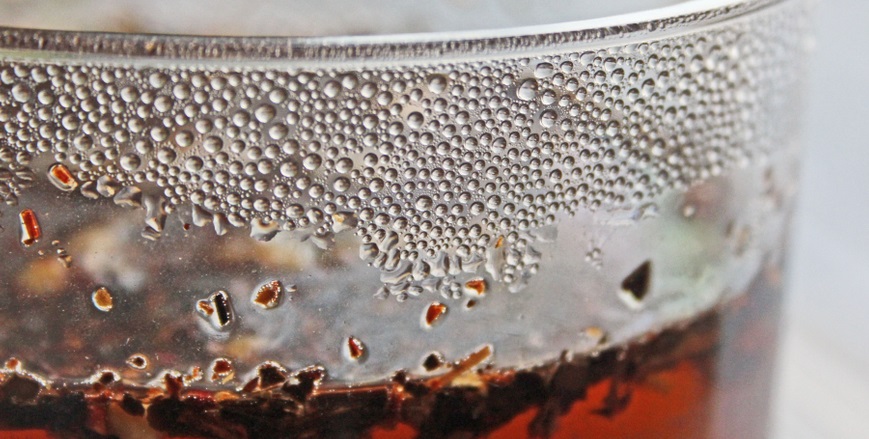
If you grew up plunging one or two dusty tea-bags into a piping hot cup of water, you might think it’s the best way to take your tea. Except it’s not.
The tea-bag is all about convenience, and that’s it.
That’s why savvy tea lovers choose to steep their favorite loose teas.
This isn’t just the right method to brew tea, but also the best way to take a healthy and tasty cuppa.
Don’t believe us? Here are the top reasons why loose tea is amazing:
Room for More Goodness
Loose teas are chock-full of minerals, vitamins, antioxidants, and other best-for-you micronutrients.
Unfortunately, you cannot reap the full benefits of these nutrients if they don’t end up in your tea.
And how rich your tea will become boils down to the size, variety, and method of brewing.
Tea-bags are small and cramped. That means the ability of the tea to absorb water and engorge will be significantly limited by the size of the bag.
Even if you cram whole-leaf tea into the small bags, you won’t get a very tasty, rich cup.
That’s why steeping loose-leaf teas is a slice of heaven for those who love infused teas.
It provides the loose teas plenty of room to absorb water, expand, and release as many nutrients and flavor as possible.
More Flavors and Aromas
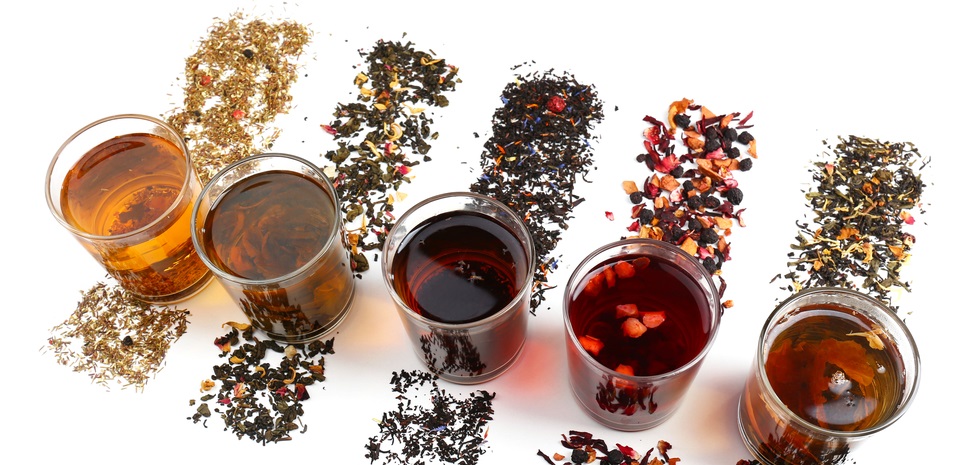
You must have realized that tea from tea-bags is usually a little bitter and has a bite to your taste buds. You probably added a little more sweetener or sugar to remove the aftertaste. That’s no way to enjoy your tea.
Most tea-bags are filled with fanning and dust from ground tea leaves. Unfortunately, this process of creating fine dust strips away tannins, aromas, essential oils, and other flavor-enriching compounds from the tea leaves.
The beauty of loose-leaf teas is that they have all their innate tannins and natural oils intact. When you steep them, loose-leaf teas release more flavors and aromas which gives your cup of tea that richer and more flavorful factor.
Another downside of using tea bags is the containing bag itself. The size, material, and shape of the teabag can impact on the end product. More often than not, tea dust is packaged in the bleached pulp.
That means the bleaching material can add odd flavors and harmful chemicals to your cup of tea.
On its end, loose teas are all-natural and free from any toxins or off flavors. The aromas that come from the final cup are 100% organic.
Higher Quality
What you see is what you get when it comes to loose-leaf teas.
This makes shopping for your favorite teas easy.
The leaves packed in most tea-bags are typically the leftovers and what’s called “tailings.”
They may contain seeds, stems and ground pieces of brushes. Needless to say, these can affect the quality and taste of your tea.

Variety is the Name of the Game
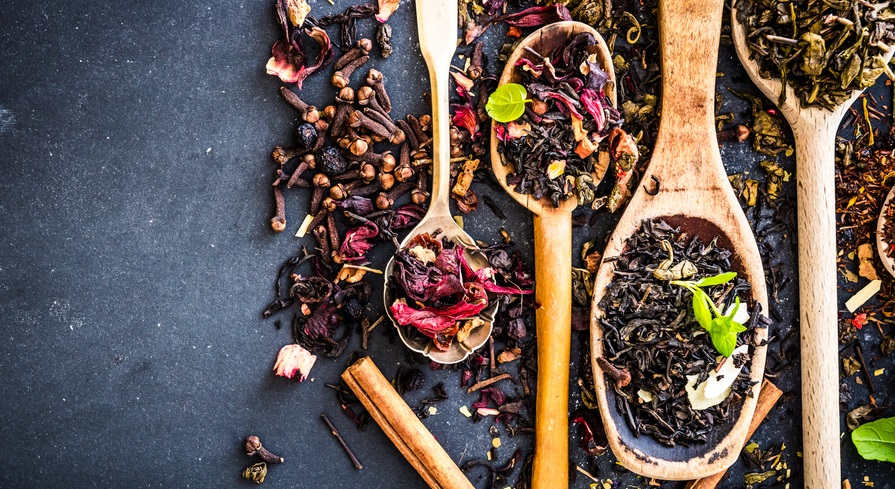
The nature of loose teas makes it easy for you to add flavors and aromas that you want.
Not only do loose teas come in huge varieties, but you can also add a touch of flavor-inducing ingredients like chamomile, cardamom, cinnamon, peppermint, and so forth.
Whatever tickles your taste buds, you can always find loose teas that have your specific flavor.
This means you can personalize your tea-drinking experience, and make sure that you know what actually goes into your cup.
Every season comes with different blends, flavors and aromas of loose tea.
You can go for exotic varieties or choose run-of-the-mill flavors. You can steep and enjoy limitless mix of flavors rather than stick to just a few mundane tastes.
Re-Steep, Re-use, Save Money
The quality of tea dust that comes in tea-bags is so poor that each bag can only be used once. Sometimes you have to dip another bag to get the taste and flavor profile you’re looking for. That’s a little wasteful, to say the least.
Unlike their tea-bag cousins, loose-leaf teas can be steeped several times to extract as many nutrients and delicious flavors as you can.
You can rest assured that even the third steep will deliver plenty of essential oils and flavors. That’s what makes quality, loose tea stands out from low-quality tea-bags.
Let’s be candid. High-quality tea doesn’t come exactly cheap. The good news is that you can steep them as many as 4 times, even more for some teas.
That’s a great way to get a bang for your top-dollar and reduce your carbon footprint.
Up your Tea Drinking Game
An avid tea drinker knows that not every tea is created equal. If you’ve made time to brew tea, it better be worth your time. Drinking tea using tea-bags are just torturing your taste buds.
Your days of drinking lackluster teas are over. Jump on the loose-leaf tea bandwagon and take your tea game to the next level.
Tools Every Tea Lover Should Own
Making a perfect cup of tea is an art and science that you need to master. Even still, you need the right tools and techniques to ensure that everything is up to scratch. Here are 4 must-have tools:
(a) Tea Kettle
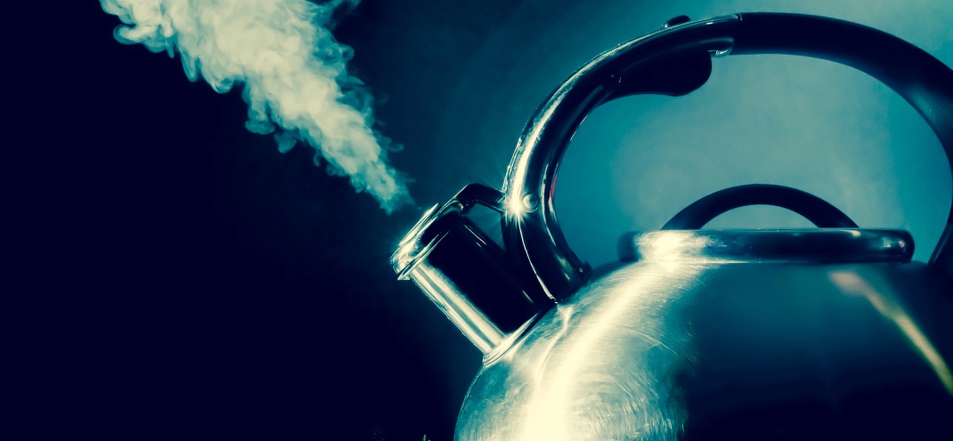
Every tea drinker knows the value of having a quality tea kettle is absolute. It’s functional, simple and can add some old-timey touch to your kitchen.
The good thing about a tea kettle is that it gets the brewing done fast. But it should be stylish and built to last too.
Let’s get something straight right out of the gate: a tea kettle is not the same thing as a teapot. You can put the kettle on top of a stove, but you can’t do that when it comes to a teapot.
That being said, here are some tips to consider when choosing the right tea kettle for you:
Picking the right type
There are cast iron, stovetop, electric, copper, stainless steel, enamel, and whistling tea kettles. The right type of you often boils down to your budget, time, and tea-drinking style.
Often, electric tea kettles check all the boxes, which make them an ideal choice for tea drinkers of all styles and experience.
Avoid kettles with bottom seams
Most tea kettles come with stainless steel construction. While this makes sure that the kettle is durable, it can also make it susceptible to corrosion or rusting. To avoid this, ensure the kettle doesn’t have seams at the bottom.
Enamel kettles are way better for stovetops
Enamel looks as good, if not better than stainless steel. But the icing on the cake is that it won’t rust or scratch easily.
Go for a kettle with a higher handle
The last thing you want is to get your skin burned by steam from the kettle. A higher handle is the best solution. On a similar note, you should avoid short, plastic handles. They are a disaster in the making.
The right heat is crucial
Low-heat kettles are not going to do a bang-up job. Buy one that’s rated medium or high heat.
(b) Tea Infuser
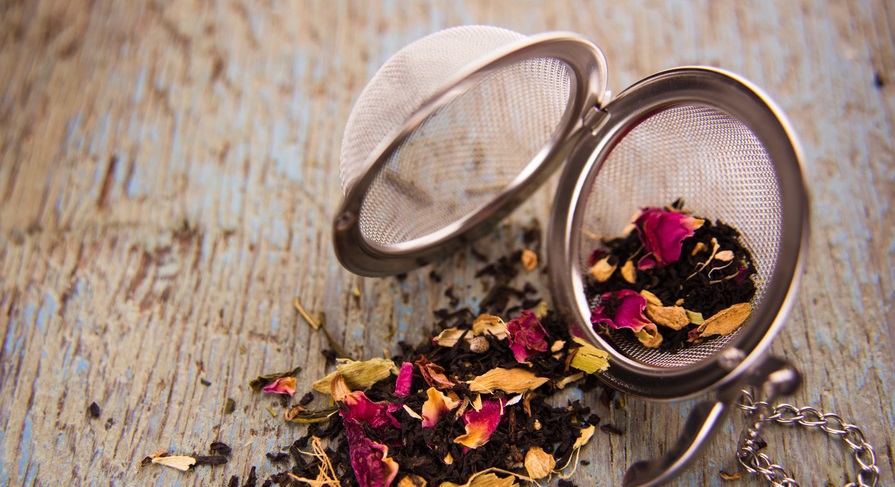
More and more tea lovers are ditching tea-bags for tea infusers.
It is must-have accompaniment to your teapot, tea kettle or teacup.
This is a spoon or ball-shaped tool with a meshy-looking or perforated container that can keep in loose tea leaves and allow water to flow through.
Loose-leaf teas are usually put inside the infuser and immersed in the kettle, allowing the leaves to swim in the hot water and release their flavors.
Like tea kettles, there are several styles and types of tea infusers, including tea ball infusers, tea brewing baskets, teapots with infusers, teacups with infusers, and silicone tea infusers.
You cannot steep your favorite loose tea without the right infuser. While it’s better and healthier than using tea-bags, steeping with the wrong infuser can turn into a messy nightmare.
If you don’t already have one, here are the top factors to take into account when choosing your next tea infuser:
- Match the infuser with your lifestyle – If you’re an active person who likes to take tea on the go, you might want to with a bottle with infuser like Kool8 or mug with infuser.
- It’s all about how much tea you intend to make – infusers come in all sizes and shapes. Brewing baskets are usually large, and will brew tea for a family, office or big group. On the other hand, spoon-style and tea balls infusers are designed for making a few cups.
- Width – the infuser should be the same width as your mug or cup
- Construction – It’s a no-brainer to choose an infuser that’s made of stainless steel
- Handle – the Handle should be easy to grip, use and large enough to prevent burns.
- Cover setup and design – The cover should have holes or mesh around 0.3 mm in size
(c) Tea Strainer
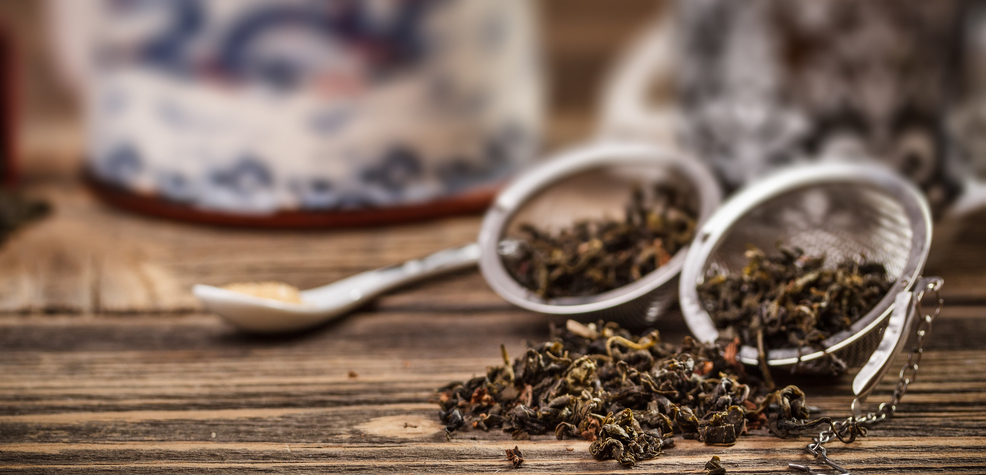
Steeping loose tea requires a top-notch tea infuser or strainer. A teapot is usually the companion of choice for tea strainers. When you steep loose tea this way, the strainer sits on the rim of the teacup.
This helps prevent tea leaves from getting into your cup when pouring from the kettle or teapot.
If you intend to make and serve a large amount of tea each time, it is crucial that use a strainer. They are also spot on for loose leaves that need more time to infuse because they strainer will not leave that harsh or bitter aftertaste.
When picking the right strainer, here are some things to keep in mind:
- Brewing capacity – Do intend to make a single infusion or brew a large batch of tea? Look into your tea-drinking needs and pick a tea strainer that best suits your brewing needs.
- Consider the tea type – The holes in strainer should be determined by the type of loose teas that you use. If you like spiced or herbal loose teas like masala chai or matcha, the smaller the holes in the strainer, the better.
- Material – Strainers come in different materials, including silicone, bamboo, paper and mostly stainless steel mesh. You can go for the latter to make sure your strainer is long-lasting and durable.
- Lifestyle – Pick a simple yet elegant strainer for everyday use or go for a fun strainer for poolside parties.
(d) Tea Infuser Travel Mug
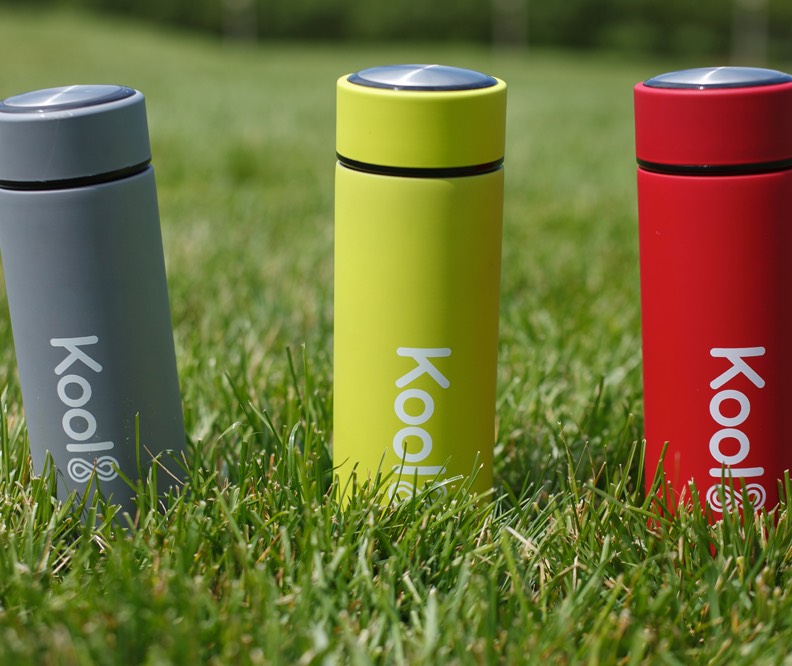
Tea infuser travel mugs and bottles are all the rage right now, and it’s not hard to see why. They come in handy when you want to brew a perfect cup at the office, on the beach or on the go.
Take Kool8, for instance. This is sleek-looking bottle is a travel mug, water bottle, and tea infuser, all wrapped in one. What a product, huh?
Kool8 is hands down the best water bottle-cum-travel mug with tea infuser. The infuser rests superbly on the rim of the bottle, allowing you to brew with all kinds of loose-leaf teas.
It’s lightweight yet sturdy with stainless steel for a modern look and feel. With a capacity of 500ml (18 fl. oz.), every brew will satisfy even a heavy tea drinker. Not just that – Kool8 bottle is eco-friendly, and can keep your tea warm for up to 12 hours.
You can pick your travel mug in pink, green, blue, red or gray — there’s something for every style and personality.
Step by Step Guide to Brewing Loose Tea
Brewing loose tea can be easy peasy or a complicated affair, depending on whom you ask. Whether you’re a newbie or a veteran tea brewer, here’s a step by step guide that’ll make the whole process easy and hassle-free:
Step #1: Buying the Best Quality Loose Tea
A great cup of tea starts with fresh, quality loose tea. That’s why this step will make or break your loose tea-making ambition. Which type of loose tea is good for you?
It pays to learn a bit about loose teas, especially if you’re a rookie. You can find loose teas with malty, earthy, floral notes. Or, go for tea varieties that have a tangy, sweet or bitter taste. Are you an aromatic or flavor kind of a tea drinker?
Once you know what taste, flavor and aroma profile of loose tea that you want, it’s now high time to choose the right place to buy. This where your online skills come in handy. Read online reviews, and ask questions on loose tea communities online.
Ultimately, don’t be afraid to test several types of loose tea to find the right flavor profile for you.
Step #2: Gather Everything you Need
To brew your tea, you need a tea infuser, loose-leaf tea (already bought above), tea kettle, and a teapot or tea infuser with a mug like Kool8. Some people may require a tea strainer, particularly if you’re brewing many multiple servings of tea.
Step #3: Get the Measurements Right
With a vibrant set of loose teas, you can easily get carried away. The last thing you want, however, is to add too much or too little. The amount of loose tea has to be just right.
The label that came with your loose tea product should tell you exactly what you need. If not, the rule of thumb is to put 1 teaspoon of loose tea into an 8-ounce cup of hot water. Some light, fluffy blends like chamomile or white loose tea may call for more per cup of water.
Technically, you will need 102 tablespoons of black tea for every cup of water, ; puer tea, 1-2 tablespoons; oolong tea, 3/4-2 tablespoons; scented tea, 3/4 tablespoons; white tea, 2 tablespoons; yellow tea, 3/4-1 tablespoons, and green tea calls for 3/4-2 tablespoons per cup of water.
Step #4: Boil the Water
You don’t need to bring the water to a boil. The final water temperature also depends on the type of tea.
For herbal/spiced loose teas, set the kettle to 212° F. The same goes for black & Pu-Erh teas (212° F), Oolong teas (195° F), green (around 175° F), and white teas (170-180° F).
Fresh, filtered water is a good fit for brewing loose tea. Never use hard water.
Step #5: Steeping your Tea
Put the recommended amount of loose tea into a teapot or teacup with a strainer or tea infuser. The latter is preferred because it makes it easy to brew your favorite loose leaf tea.
Let the strainer or infuser sit inside the teapot before you pour in hot/warm water at the right temperature. The steeping duration often varies depending on your personal taste and the type of loose tea.
SET the appropriate steeping time, which is as follows:
- Tisanes/fruit/ herbal loose tea – 5 to 7 mins
- Oolong teas – 4 to 7 mins
- White and green teas – 2 to 3 mins
- Pu-errs and black loose teas – 3 to 5 mins
Step #6: Serve in your Cup of Choice
You can serve in a traditional coffee mug or sturdy water bottle like Kool8. Because it has its own infuser, making loose tea with Kool8 is a breeze.
Step #7: Enjoy!
Tea is made to be savored. It should dance and tickle your taste buds. It should not be hurried. For improved taste, you can add a little creamer, sugar or sweetener of your choice. Some people prefer to drop a dash of chamomile or mint.
Why Loose Leaf Tea Is Great & Healthy
Tea steeped from loose tea doesn’t just take heavenly. Loose teas also offer a wide array of health benefits because they comprise lots of compounds and antioxidants. Let’s take a look at some of the eye-opening health benefits:
May help enhance your heart health – Black tea is one of the sources of compounds called flavonoids. These antioxidants are also what makes red wine so desired. Flavonoids have been scientifically proven to help lower high cholesterol, high blood pressure, and bad blood lipids.
Has lots of antioxidants – The compounds help boost your immunity, reduce inflammation, and prevent a variety of health issues, from obesity to cancer.
Improves gut health – A healthy gut can prevent a long list of ailments
Helps curb high blood pressure and high blood sugar
Black tea also helps reduce the risk of obesity, diabetes, and cancer
Pain relief – It can help relieve puffy eyes, stress, diarrhea, headaches, and asthma.
Works against constipation – Loose tea types like chai tea and green tea are great at eliminating constipation and other digestive problems.
There you have it – our quick guide to loose-leaf teas. Go ahead and brew your favorite type of loose tea!


